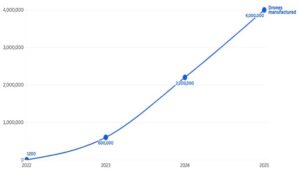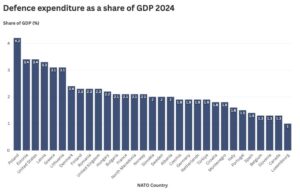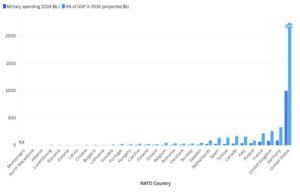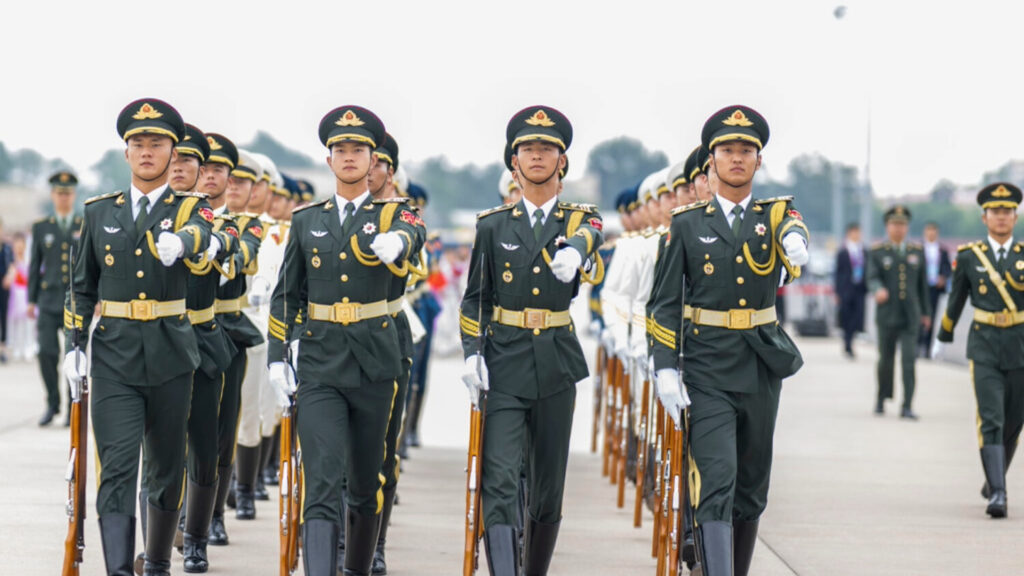Rethinking NATO’s Defence in the Drone Era
How the rapid evolution of drone warfare in the Russia-Ukraine conflict is reshaping military doctrine, highlighting NATO’s vulnerabilities and the need for adaptations in a drone dominant future.
The Russia-Ukraine war fundamentally reshaped modern warfare. Unmanned aerial systems (UAS), drones, have gone from emerging technology to crucial assets on the battlefield (Jakes, L., Santora, M., Kramer, A. E., Hernandez, M. and Sholudko, L., 2025). Their sudden ascent altered the pace, cost, and conduct of warfare, offering valuable lessons on the future of military operations (Bronk, J., 2025). To ensure credible deterrence against future threats, NATO must fully understand the impact of modern drone warfare and adjust its strategic posture accordingly (Jakes, L., 2025). Yet, experts caution that, while drones will represent a key asset, they are unlikely to replace traditional military power (Bronk, J., 2025).
The Ascendancy of Drones in Ukraine
Since 2022, the drone industry has grown rapidly, becoming essential to Ukraine’s defence strategy (Halstian, M., 2025). Initially reliant on foreign drones and merely seven domestic manufacturers, Ukraine quickly indigenised production, building over two million FPV drones in 2024, and in February 2025, President Zelensky stated that Ukraine is now capable of producing 4 million drones annually (Finer, J. and Shimer, D., 2025).

Drones have proven highly effective on the battlefield, with commanders attributing 70 to 80% of all Russian and Ukrainian casualties to their use (Jakes, L., Santora, M., Kramer, A. E., Hernandez, M. and Sholudko, L., 2025). Moreover, Ukraine managed to increase its success rate from 30% in 2022 to 70% in 2024 by compensating for reduced accuracy with a larger number of drones (Tian, N., Scarazzato, L. and Guiberteau Ricard, J., 2025).
Russia, however, is rapidly improving, with recent estimates showing it could launch up to 2,000 drones and missiles daily (Beznosiuk, M., 2025). The Kremlin is also financing several technological improvements, such as integrating thermobaric warheads, developing fibre-optic and AI-guided drones, more resistant to electronic warfare (Halstian, M., 2025).
Evolving NATO’s Military Approach
The evolution of the war in Ukraine highlighted both the operational value of drones and significant vulnerabilities in NATO’s current force structure (Jakes, L., 2025). This led some defence officials to re-evaluate their military approach (Jakes, L., 2025). Currently, NATO sees drones as supporting assets rather than core elements. Yet, recent conflicts have underscored their potential to quicken targeting cycles, overwhelm defences, and impose high costs on adversaries (Jakes, L., 2025).
While initiatives such as the Defence Innovation Accelerator for the North Atlantic (DIANA) show initial progress, many member states remain anchored to past conflict models (Onderco, M., 2025). Increasing counter-drone capabilities and strengthening C2 (command-and-control) networks — making them more resistant to jamming and spoofing — will be necessary for NATO countries to adapt to this new era of warfare (Onderco, M., 2025).
However, the widely uneven investment among members complicates the standardisation and development of joint capabilities—both crucial for large-scale integration of drones (Halstian, M., 2025). In 2024, NATO member countries spent an average of 2.03% of their GDP on defence, with wide discrepancies between countries like Poland, which spent 4.2%, and Spain, at 1.3% (Tian, N., Scarazzato, L. and Guiberteau Ricard, J., 2025). Without better alignment, NATO may fail to turn its technological potential into real operational advantage.

Funding and Force Development Trends
Bridging the gap would require NATO members to provide consistent funding, ensure industrial growth, target investments in unmanned systems, develop electronic warfare countermeasures, and implement layered air defence (Bronk, J., 2025). To achieve this, at the 2025 NATO Summit in The Hague, allies committed to investing 5% of GDP in defence by 2035, which would bring total NATO spending to $4,199.1 billion, compared to the current $1,506.1 billion in 2024 (Tian, N., Scarazzato, L. and Guiberteau Ricard, J., 2025; European Council on Foreign Relations, 2025). This would include allocating 3.5% of GDP to core defence requirements and 1.5% to defence- and security-related spending (NATO, 2025).
Reaching such an objective would require more than budgetary commitment; it will necessitate coordinated procurement, streamlined acquisition processes, and reliable technology-sharing (Halstian, M., 2025). Without a parallel industrial expansion, NATO risks a technology gap in which the pace of adversaries’ innovation outstrips its own acquisition processes.

The Danger of Over-Reliance on Drones
While drones offer numerous advantages — such as strategic intelligence and low-cost precision strikes — the Ukraine conflict underlines the risks of over-relying on them (Bronk, J., 2025). Despite inflicting substantial Russian losses, Ukraine continues to lose territory (Jakes, L., Santora, M., Kramer, A. E., Hernandez, M. and Sholudko, L., 2025), demonstrating that, regardless of their transformative impact, drones are not yet able to match the destructive power and benefits provided by heavy artillery, armour, and crewed air platforms (Bronk, J., 2025). Moreover, drones’ limitations — including vulnerabilities to electronic warfare, restricted payloads, and dependence on secure data links — significantly reduce their efficacy in large-scale operations (Bronk, J., 2025; Halstian, M., 2025). NATO also anticipates that future conflicts, such as those involving the US and China, will likely be centred on carrier strike groups rather than drones, especially over Taiwan.
Finally, focusing excessive resources on drones could give a strategic advantage to adversaries who have already developed effective counter-capabilities, such as jamming and deploying decoys (Bronk, J., 2025). A doctrine centred solely on drones, without robust combined-arms integration, could erode NATO’s deterrence capabilities and increase its vulnerabilities (McInnis, K., 2025). The future battlespace will likely reward hybrid force designs that combine unmanned systems with resilient conventional assets.
Ukraine’s experience shows how drones shaped the current battlefield while still depending on integration with conventional firepower. For NATO, this highlights the need to increase drone production while still maintaining strong conventional capabilities and a balanced force posture. Current disparities in defence spending, counter-electronic warfare capabilities and procurement timelines could lead the Alliance to fall behind adversaries. Therefore, NATO’s deterrence will depend on its ability to maintain strategic readiness, technological advantage and operational resilience as well as strong conventional capabilities.
Bibliography
- Atlantic Council (2025) Beznosiuk, M. ‘Putin is winning the drone war as Russia overwhelms Ukraine’s defenses’, Atlantic Council, 8 July. Available at: https://www.atlanticcouncil.org/blogs/ukrainealert/putin-is-winning-the-drone-war-as-russia-overwhelms-ukraines-defenses/
- Boulègue, M. (2025) ‘Russia’s struggle to modernize its military industry’, Chatham House, July. Available at: https://www.chathamhouse.org/2025/07/russias-struggle-modernize-itsmilitary-industry
- Bronk, J. (2025) ‘NATO Should Not Replace Traditional Firepower with “Drones”’, RUSI Defence Systems, 4 August. Available at: https://www.rusi.org/explore-our-research/publications/rusi-defence-systems/nato-should-not-replace-traditional-firepower-drones
- Djokic, K. (2025) ‘Are the European NATO states moving towards self-reliance in arms procurement? A Q&A with Katarina Djokic’, SIPRI, 19 March. Available at: https://www.sipri.org/commentary/topical-backgrounder/2025/are-european-nato-statesmoving-towards-self-reliance-arms-procurement-qa-katarina-djokic
- ECFR (2025) ‘Small change, big difference: How the NATO summit can still support Ukraine’, European Council on Foreign Relations, 24 June. Available at: https://ecfr.eu/article/small-change-big-difference-how-the-nato-summit-can-still-support-ukraine/
- Finer, J. and Shimer, D. (2025) ‘Ukraine’s Drone Revolution and What America Should Learn From It’, Foreign Affairs, 7 July. Available at: https://www.foreignaffairs.com/russia/ukraines-drone-revolution#:~:text=By%20January%2020 25%2C%20Ukraine%20had,and%
- Frąckiewicz, M. (2025) ‘Drones in Ukraine (2022–2025): A Comprehensive Report’, TS2.Tech, 29 May. Available at: https://ts2.tech/en/drones-in-ukraine-2022-2025-acomprehensive-report/
- Gady, F.-S. (2025) ‘The Air Battle That Could Decide the Russia-Ukraine War’, Foreign Policy, 23 July. Available at: https://foreignpolicy.com/2025/07/23/ukraine-war-drone-airbattle-russia-technology-tactics/
- Halstian, M. (2025) ‘A First Point View: Examining Ukraine’s Drone Industry’, Georgetown Security Studies Review, 15 May. Available at: https://georgetownsecuritystudiesreview.org/2025/05/15/a-first-point-view-examining-ukraines-drone-industry/
- Jakes, L. (2025) ‘As drones transform warfare, NATO may be vulnerable’, The New York Times, 4 June. Available at: https://www.nytimes.com/2025/06/04/world/europe/ukraine-russia-drones-nato.html
- Jakes, L. (2025a) ‘Drone attacks are the new front in war. NATO is trying to catch up’, The New York Times – ekathimerini.com, 6 June. Available at: https://www.ekathimerini.com/nytimes/1271751/drone-attacks-are-the-new-front-in-war-nato-is-trying-to-catch-up/
- Jakes, L. (2025b) ‘Drones, Exploding Parcels and Sabotage: How Hybrid Tactics Target the West’, The New York Times, 4 January. Available at: https://www.nytimes.com/2025/01/04/world/europe/nato-attacks-drones-exploding-parcelshybrid.html
- Jakes, L., Santora, M., Kramer, A. E., Hernandez, M. and Sholudko, L. (2025) ‘A Thousand Snipers in the Sky: The New War in Ukraine’, The New York Times, 3 March. Available at: https://www.nytimes.com/interactive/2025/03/03/world/europe/ukraine-russia-war-drones-deaths.html
- Jensen, B. (2024) ‘Raising an Army of Drones’, Center for Strategic and International Studies, 8 July. Available at: https://www.csis.org/analysis/raising-army-drones
- McInnis, K. (2025) ‘No Strategy Without Society: Rethinking NATO’s Coordination Mechanisms’, Center for Strategic and International Studies, 24 June. Available at: https://www.csis.org/analysis/no-strategy-without-society-rethinking-natos-coordination-mechanisms
- NATO (2025) ‘NATO’s response to Russia’s invasion of Ukraine’, NATO, 26 June. Available at: https://www.nato.int/cps/ru/natohq/topics_192648.htm?selectedLocale=en
- Onderco, M. (2025) ‘Navigating the AI frontier: Insights from the Ukraine conflict for NATO’s governance role in military AI’, Journal of Strategic Studies, 48(3), pp. 602–626. doi: 10.1080/01402390.2025.2463451
- Stepanenko, K. (2025) ‘Russian Drone Innovations are Likely Achieving Effects of Battlefield Air Interdiction in Ukraine’, Institute for the Study of War, 7 August. Available at: https://www.understandingwar.org/sites/default /files/Russian%20Drone%20Innovations
- Tian, N., Scarazzato, L. and Guiberteau Ricard, J. (2025) ‘NATO’s new spending target: challenges and risks associated with a political signal’, SIPRI Commentary, 27 June. Available at: https://www.sipri.org/commentary/essay/2025/natos-new-spending-target-challenges-and-risks-associated-political-signal



